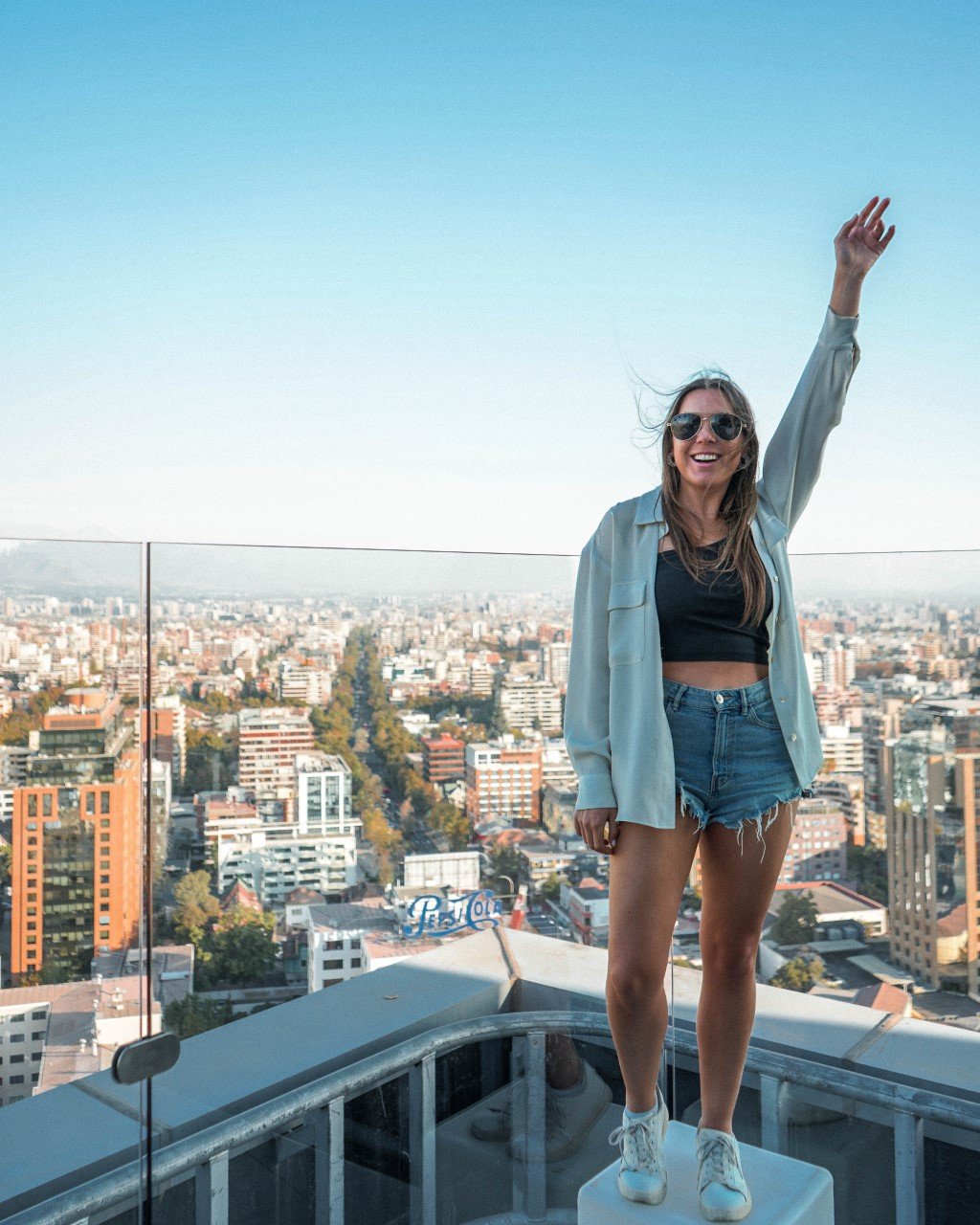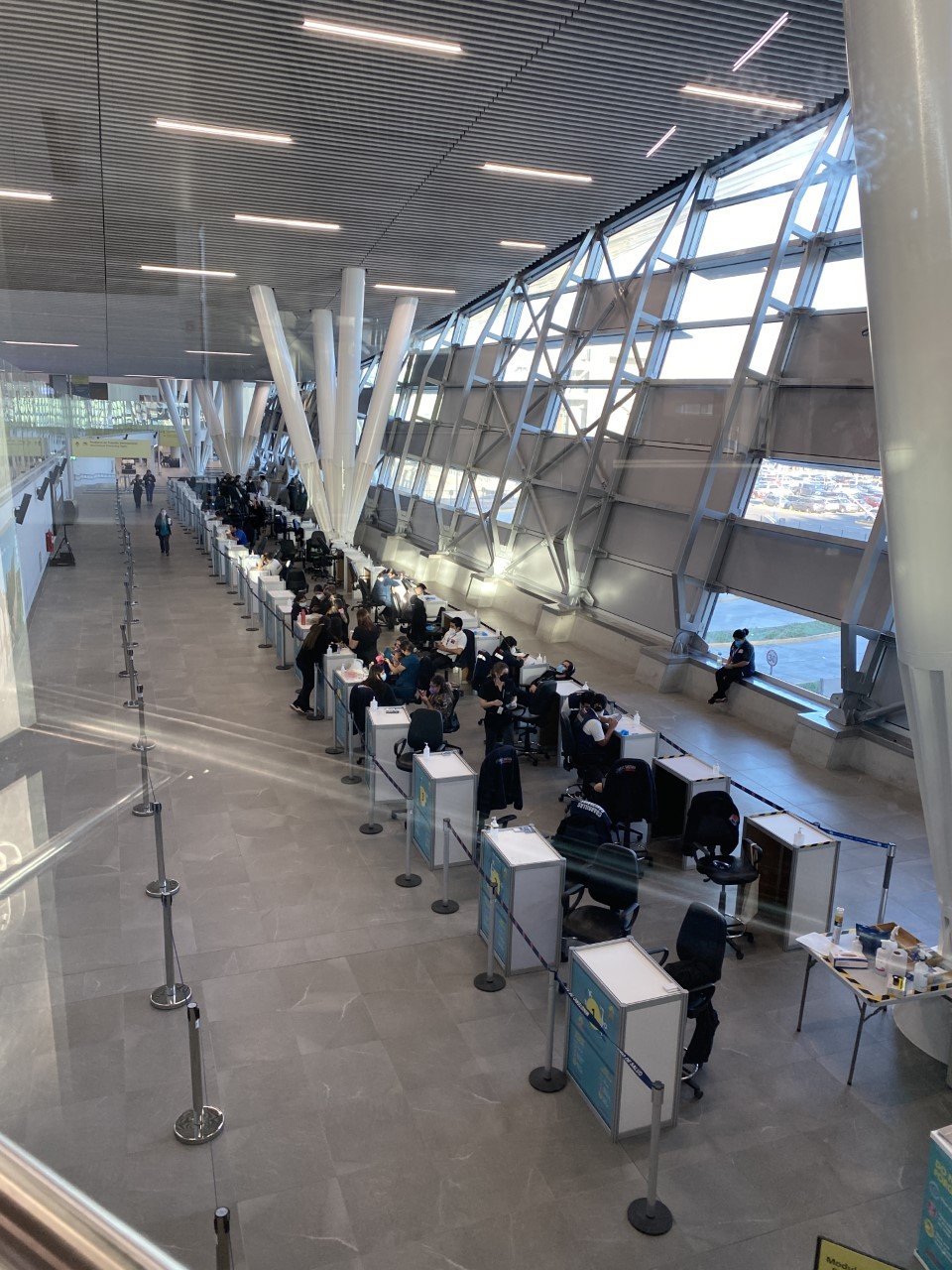How To Get Into Chile With Their Intense COVID Restrictions (2022 Travel)
Celebrating making it into Chile in Santiago!
During my first South America trip in January 2022, I’d often ask other travelers where they were going.
“Everywhere except Chile,” they’d say - and then proceed to mention the intense and lengthy entry restrictions they are requiring for tourism due to the pandemic, and how it was too “risky” to take the chance in case they didn’t get their Mobility Pass (digital health pass) approved since it can take up to four weeks.
On my first trip to South America, I was planning to only visit Brazil and Argentina (then quickly added in Paraguay and Uruguay day trips).
I loved it so much that I booked a return flight back to Argentina less than a month later, with the goal to also visit Chile, another place that has been on my bucket list for some time.
I was motivated to navigate these restrictions and enter the country!
After weeks of confusion on where I stood with the Mobility Pass (where you upload vaccine documents), and little to no helpful information online, I knew I had to share my tips to help demystify the entry process for foreign visitors after successfully visiting the country last week!
Hopefully Chile eases their restrictions soon, but until then, I hope this post helps! After all, if you are missing any of the requirements, you will not be allowed into the country.
Entering Chile as a Tourist in 2022
Rooftop view in Santiago, Chile
First things first: check your home country’s government website to see what the typical entry requirements are and if you can visit visa-free, like you would during any time.
From there, your home country’s government website should list the specific health/COVID requirements you will need to enter Chile based on your citizenship.
With pandemic rules changing constantly, I recommend always checking this prior to booking any flights, and keep an eye on it prior to your trip to see if anything has changed!
Chile’s Entry Requirements for US Citizens (Tourists/Vacation Purposes) - Early April 2022
Here’s the direct link to the US government website that lists the requirements to enter Chile right now. Please check this regularly before your trip or whatever your home country's government website is.
My visit was in early April 2022, and requirements keep changing around the world!
Screenshot from the entry information on the USA government website. Screenshot is from April 10, 2022.
Mobility Pass fully approved: Must have proof of vaccination uploaded and approved on the “Me Vacuno” website
C19 QR Code: this is the “Traveler’s Affidavit” and once it is approved, it generates a unique QR code for you. You can’t access this until the Me Vacuno website approves your vaccine information.
The website for this is www.c19.cl but the Me Vacuno profile has a tab that will allow you to click through and access it once your Mobility Pass gets approved.
Proof of negative PCR test within 72 hours of arrival (rapid/antigen tests are not accepted)
Proof of health insurance that specifically states it covers COVID costs, should you come down with the virus, for the duration of your trip
The person at the Mendoza airport specified that the insurance had to start at minimum, the day of arrival, not the day after
Getting Vaccines Approved on the Mobility Pass - Do This Weeks Ahead
The vaccine approval piece is the trickiest part about Chile’s Mobility Pass, according to everyone I’ve talked to, and this is where I was held up for over three weeks.
I uploaded an image of my CDC card that showed my most recent vaccine dose and plugged in all the data and my most recent dose date.
That got approved within 48 hours, but I had this “incomplete” error message that stayed on my profile for weeks.
To make matters worse, I accidentally hit “unsubscribe” on the Me Vacuno confirmation emails and couldn’t find a way to resubscribe, so I kept logging in periodically to check on it, haha!
After lengthy Google sessions, I was not able to figure out what would be holding back my Me Vacuno status.
I found this website that said to email ayudaregistrovacunas@minsal.cl and to translate the message into Spanish (they recommend copying/pasting your email into Google Translate to email them in Spanish). I never heard back (and nope, a response isn’t sitting in my junk mail).
On my first day in Argentina, I was less than 2.5 weeks out from my flight to Chile and was getting a little nervous.
Luckily, a new friend I met who had just come from Chile said I had to upload duplicate vaccine photos for each dose. Even though the CDC card clearly shows all doses, the website needs the same photo with multiple “entries.”
#FacePalm
I uploaded the separate photo on the spot.
A week later, my status was still unchanged. The message on my profile still said I was unable to enter Chile and my other vaccine photo was still pending review.
The friend I was traveling to Chile with already had hers approved, so we compared our profiles side-by-side.
She said the image files didn’t work for her uploads for some reason, so she uploaded the images as PDF files instead.
I deleted my PNG file that was still pending review and uploaded it as a PDF instead.
Within two hours, it was approved!
Takeaway:
Have your vaccine doses uploaded as separate files/entries
Check the file type. If it’s been many days and the PNG image files are pending review, try uploading them as PDFs to see if it works
Triple check that all of your information in the entries match the images and your passport
Travel Insurance for Chile
Street art in Valparaiso, Chile
The COVID-specific travel insurance was the second trickiest part for me and for those I’ve talked to who have traveled to Chile recently.
My credit card automatically includes travel insurance, which includes medical expenses as well. However, it doesn’t specifically state that it covers COVID costs while traveling.
My friend and I thought we’d “chance it” and buy travel insurance at the airport if we were asked.
Before we were even allowed to check in at the Mendoza (Argentina) airport, the airport employee asked to see the travel insurance as she needed to upload screenshots that showed:
That it specifically covered COVID costs over $30,000 USD while in Chile
The dates that the travel insurance was active, including the day we arrived in Chile
My full name on the insurance policy and match it to my passport
Luckily, I’ve heard good things about SafetyWing, which includes COVID coverage with their insurance.
My friend and I bought the SafetyWing insurance for the week on the spot, and it was only $15 each for seven days. It met all the above requirements for Chile!
It was super easy and they listed out everything in such a clear way that this “detour” for our travel plans wasn’t too long.
If you need travel insurance as a digital nomad, I highly recommend SafetyWing (for Chile or elsewhere). You can browse their plans here.
Exiting Argentina
The airport employee uploaded the insurance information, along with our C19 form and negative PCR tests, so we could fully check in and board the flight.
We also had to fill out the Argentina immigration exit form via mobile prior to checking in for the flight.
Arriving in Chile at the Santiago Airport - Random PCR Test
The booths at the Santiago airport where they checked our C19 again prior to sending us to the random PCR test
Once we arrived in Chile, my friend and I were both flagged down for random COVID tests while we were walking toward the immigration counter.
First, we had to walk to a booth in the airport where an employee checked our C19 forms again. Then, “based on our passport numbers ending in a 5” (how they were determining random checks at that point that day), my friend and I both had to do on-arrival PCR tests.
It felt like overkill since we had already presented negative PCRs and were fully vaccinated, but there’s no arguing with airport immigration authorities.
Luckily, we were able to go through customs and leave the airport right after the COVID tests. Both our results were negative (they give you a paper where you go online to check the results within a few hours).
I heard other travelers say that only a few weeks prior they had to sit at the airport for 2-4 hours until the negative test result arrived, and only then were they allowed to go through customs and leave the airport.
Using the C19 Pass Around Chile
We were only asked to preset the C19 pass three times during the week to enter a few restaurants.
Many of the locals are understandably tired of these requirements and were saying how they hope the mandates relax soon or go away entirely, which makes sense why so few businesses required the C19 QR code to get in.
Note that the QR they need to scan isn’t from the C19 confirmation page. There is a PDF that shows up when you complete the C19 and is accessible by logging into your Me Vacuno profile.
I took a screenshot of this page with the QR code, added it to my “Favorites” on my phone, and then zoomed in on the QR code when asked.
With other countries around the globe easing COVID entry restrictions - some entirely - perhaps Chile will follow suit in the near future.
Until then, I hope you found this post helpful!
This website contains some affiliate links. They help keep the blog running at no extra cost to you. Any affiliate links are based on a genuine recommendation.





